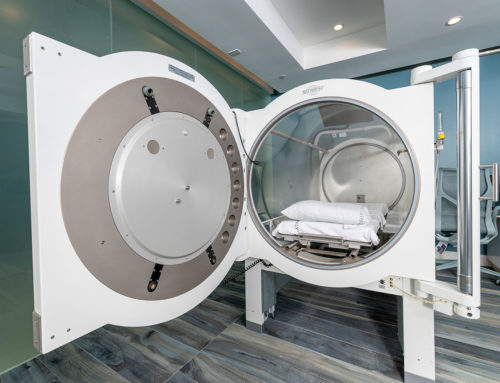Hyperbaric oxygen treatments can be administered in several different ways. Some are more effective than others, some are more comfortable than others, and some may not work very well at all.
In other words, not all HBOT treatments are the same.
You may be receiving extra oxygen at high pressures, but are you sure that your body is fully saturated with 100% pure oxygen?
Let’s take a look at what makes these treatments different and how you can determine whether or not your time spent in an HBOT chamber is leading to the results you want.
Monoplace vs. Multiplace Treatments
While both monoplace and multiplace HBOT chambers focus on delivering 100% pure oxygen to the patient, there are some important differences that can impact your treatment experience.
First, monoplace chambers offer the precise control necessary to meet an individual’s exact treatment needs. We can control the pressure and the oxygen level so that every treatment is as effective as possible. Since multiplace chambers treat several individuals at once, there is less control over the specifics.
Second, multiplace chambers are more likely to be found in hospitals or trauma centers – places in which waiting around for an open chamber is not an option. This also means that they have more options for specialized seating (like wheelchair space), and patients can stand or lay down if that makes them more comfortable.
Finally, multiplace chambers require the patient to breathe the oxygen through a special mask or hood. This, for many people, can be very uncomfortable – especially when treatments can easily last for a couple of hours. It can feel a bit claustrophobic for many people, which makes it hard to relax.
It’s true that you will receive 100% oxygen in either treatment, but monoplace has the potential to be more comfortable and more effective.
Soft-Side Chambers vs. Hard-Side Chambers
Simply put: soft-side chambers cannot provide the same level of benefits or treat the same conditions that hard-side chambers do.
A soft-side chamber is made out of a soft plastic that is not designed to handle the level of pressure that is necessary to saturate the body with healing oxygen.
They have gained some notoriety recently because they are not considered medical equipment and the user doesn’t need a physician’s recommendation or signature to use them. They can be stored easily, so they can, in fact, be used in the home.
However, unlike hard-side chambers, they are not approved to treat anything but acute mountain sickness.
Let’s look closer at the details.
Soft-side chambers can handle pressurized air up to 1.3 ata, while hard-side chambers can produce pressures up to 3.0 ata. Hard-side chambers deliver 100% pure oxygen, but soft-side can only provide approximately 21% oxygen (which is practically ambient air).
Hard-side chambers are approved by the FDA to treat a wide range of conditions, and studies are showing a lot of promise in several off-label conditions, too. Soft-side chambers are useful for a single treatment. Everything else simply isn’t possible
So, to sum up: you will not be able to receive an effective treatment in a soft-side chamber.
Choose the Most Effective HBOT Treatment
It’s important to understand the differences in these treatments so you can prepare for your experience in an HBOT chamber and take advantage of hyperbaric oxygen benefits.
At Aalto Hyperbaric Medical Group, our monoplace hyperbaric chambers are made by Sechrist Industries Inc., a world leader in HBOT technology. Each of these chambers has been designed to provide quality treatments in a comfortable environment.
We are here to answer all your questions about these HBOT treatment methods. Schedule an appointment with us today at 1-888-303-HBOT, or email us anytime at info@aaltohyperbaric.com to learn more about your options.
RELATED POSTS
GET STARTED TODAY
Schedule an appointment with us today by calling (310) 507-7942 or using the contact form below.discover thisread what he saidelfbar 3500company website


